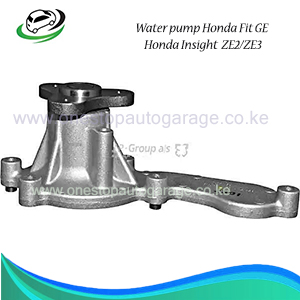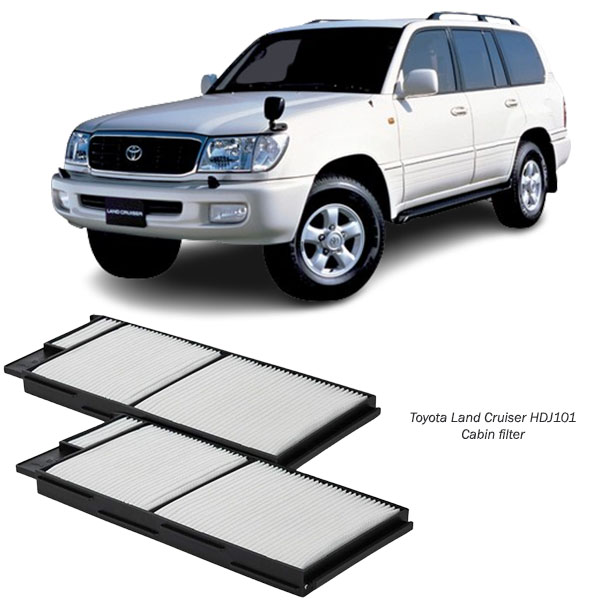-25%
Get Toyota Land Cruiser HDJ101 Cabin filter 88568-60010 in Kenya
The cabin filter, often overlooked but vital, plays a crucial role in maintaining air quality inside a vehicle. It is designed to filter pollutants, debris, and contaminants from the air entering the car’s interior through the HVAC (Heating, Ventilation, and Air Conditioning) system. This article explores the construction, functionality, benefits, types, and maintenance tips for cabin filters, offering a comprehensive understanding of this essential automotive component.
What Is a Cabin Filter?
The cabin filter, also known as the HVAC filter or air conditioning filter, is a small pleated unit located in the HVAC system. It is responsible for filtering the air that flows into the cabin, ensuring that passengers breathe clean and fresh air. Cabin filters are particularly crucial for individuals sensitive to allergens, pollution, and odors, making them indispensable in urban and dusty environments.
Construction of a Cabin Filter
Cabin filters are typically made of pleated paper or synthetic material combined with activated carbon in advanced models. Here’s a closer look at the common materials and their purposes:
- Pleated Material:
The primary filtering medium traps solid particles such as dust, pollen, and debris. The pleats increase the surface area, enhancing filtration efficiency. - Activated Carbon Layer:
Some cabin filters include an additional layer of activated carbon to adsorb odors, harmful gases, and volatile organic compounds (VOCs). - Support Frame:
The filter is encased in a rigid frame, often made of plastic or metal, ensuring durability and ease of installation.
Functions of a Cabin Filter
The cabin filter performs several critical functions to improve the driving experience and protect vehicle occupants:
- Air Filtration:
It captures airborne contaminants, such as dust, dirt, pollen, mold spores, and other allergens, ensuring clean air inside the cabin. - Odor Removal:
Filters equipped with activated carbon help neutralize unpleasant odors, such as exhaust fumes and industrial pollutants. - Protecting the HVAC System:
By filtering debris, the cabin filter prevents clogs and damage to the HVAC system components, such as the blower motor and evaporator. - Reducing Fogging:
A clean cabin filter promotes optimal airflow, reducing the likelihood of fogged windows, especially in humid conditions. - Enhancing Passenger Comfort:
Clean air inside the cabin reduces fatigue, enhances focus, and improves the overall comfort of passengers and the driver.
Types of Cabin Filters
Cabin filters come in various types to cater to different needs and vehicle models:
- Particulate Filters:
These are basic cabin filters designed to trap dust, dirt, and pollen. They are affordable but lack odor removal capabilities. - Activated Carbon Filters:
Advanced filters that combine particulate filtration with odor and gas adsorption through an activated carbon layer. Ideal for urban areas with high pollution. - HEPA Filters (High-Efficiency Particulate Air):
These provide superior filtration, capable of trapping particles as small as 0.3 microns, including bacteria and viruses. Commonly used in premium vehicles or for health-conscious drivers. - Electrostatic Filters:
These filters use an electrostatic charge to attract and trap particles, enhancing filtration efficiency without increasing airflow resistance.
Benefits of a Cabin Filter
- Improved Air Quality:
By removing pollutants, cabin filters ensure passengers breathe cleaner air, reducing the risk of allergies and respiratory issues. - Allergen Protection:
Cabin filters are effective in trapping allergens like pollen and mold spores, making them essential for passengers with allergies or asthma. - Odor Neutralization:
Activated carbon filters minimize unpleasant odors, creating a more pleasant driving environment. - Prolonged HVAC Lifespan:
A clean filter prevents debris from clogging the HVAC system, reducing the risk of costly repairs and ensuring efficient operation. - Enhanced Driving Comfort:
Clean air inside the vehicle reduces fatigue and improves focus, particularly during long drives or in polluted areas. - Environmental Benefits:
By trapping harmful particulates, cabin filters contribute to a healthier environment inside the vehicle.
Signs of a Dirty or Failing Cabin Filter
Over time, cabin filters accumulate dirt and debris, reducing their efficiency. Common signs indicating the need for replacement include:
- Reduced Airflow:
A clogged filter restricts airflow, making the HVAC system work harder and reducing its effectiveness. - Unpleasant Odors:
Lingering odors inside the cabin may indicate a saturated or dirty filter. - Foggy Windows:
Inadequate airflow can lead to condensation and fogging on windows. - Increased Allergies:
If passengers experience allergies or discomfort, the filter may no longer be effectively trapping allergens. - Noisy HVAC Operation:
A clogged filter can strain the blower motor, resulting in unusual noises.
Maintenance Tips for Cabin Filters
To maintain the cabin filter’s efficiency and extend its lifespan, follow these maintenance guidelines:
- Regular Inspections:
Check the cabin filter every 12,000 to 15,000 miles or as recommended by the vehicle manufacturer. Frequent inspections are essential in dusty or polluted environments. - Replace as Needed:
Replace the filter when it shows visible signs of dirt or when airflow is noticeably reduced. Most manufacturers recommend replacement every 12 months or 12,000 miles. - Choose the Right Filter:
Ensure you select a filter compatible with your vehicle’s make and model. Opt for activated carbon or HEPA filters for enhanced performance. - Clean Surrounding Areas:
When replacing the filter, clean the filter housing and nearby components to remove accumulated dirt or debris. - Monitor HVAC Performance:
Reduced airflow or unusual smells from the HVAC system can signal a need for filter replacement. - Professional Assistance:
If unsure about replacement or installation, seek professional help to ensure proper placement and alignment.
Steps to Replace a Cabin Filter
Replacing a cabin filter is a straightforward process for most vehicles. Here’s a general guide:
- Locate the Filter:
Refer to your vehicle’s manual to find the filter location. Common spots include behind the glove compartment, under the dashboard, or near the windshield cowl. - Remove the Old Filter:
Open the filter housing and carefully remove the old filter. Note the orientation for proper installation of the new filter. - Inspect and Clean:
Check the housing for debris and clean it before inserting the new filter. - Install the New Filter:
Place the new filter in the correct orientation and secure the housing. - Test the HVAC System:
Turn on the HVAC system to ensure proper airflow and functionality.
Applications of Cabin Filters
Cabin filters are essential in various vehicles, including:
- Passenger Cars:
Found in most modern cars, ensuring a comfortable and healthy driving environment. - Commercial Vehicles:
Trucks and buses utilize cabin filters to provide clean air for drivers and passengers over long distances. - Heavy Equipment:
Construction and agricultural machinery often operate in dusty environments, making cabin filters indispensable for operator safety and comfort.
Conclusion
The cabin filter is a small yet vital component that significantly impacts the air quality and comfort inside a vehicle. Regular maintenance and timely replacement ensure optimal performance, protecting both passengers and the HVAC system. Whether you’re a daily commuter or a long-distance driver, investing in a high-quality cabin filter and adhering to maintenance schedules is essential for a healthier and more enjoyable driving experience.
Follow us on Facebook for more parts.



